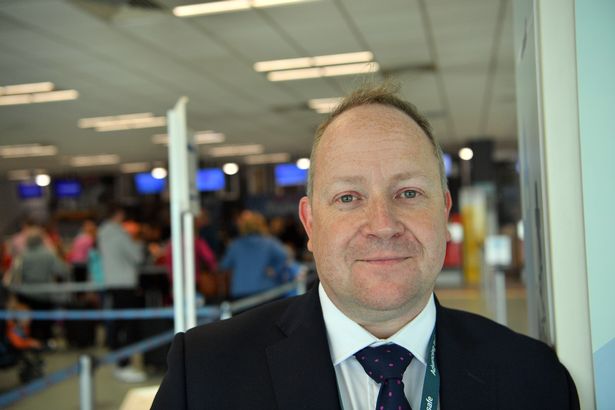The weekend of 3 June saw close to a quarter of a million football fans congregate in the Welsh capital for the UEFA Champions League Final between Real Madrid and Juventus, many of which arrived via the highways in the sky.
Staff from NATS, together with Cardiff airport, Bristol airport, transport committees and the local council, began preparation for the landmark match around 18 months ago. So how did we in air traffic control gear up for one of the largest sporting events in Wales’ history?

Changing airspace procedures
The main challenge was to make space for the 400+ additional flights while ensuring business as usual was upheld for our airport customers.
Fitting in extra flights is a difficult task when you’re limited by the space above you, so to cater for them we needed to introduce temporary airspace procedures. Largely helped by new ground procedures (which I’ll explain later on), we were able to increase Cardiff’s traffic intake by 300% – making the number of movements over the weekend close to 550.
To achieve this, we also worked with our en-route colleagues in Hampshire to set the number of achievable flights through the airspace per hour. We agreed that this figure would be shared equally between us and Bristol Airport – settling on 40 flights per hour over the weekend.
This is how last Friday compared to a “normal” Friday…
Introducing new ground procedures
Because much of the planning for this event was influenced by the amount of physical space available, both NATS and the airport had to make various changes to ground procedures.
To discover the best way to make it work, we visited Milan to find out what they did when they hosted the match last year. In terms of space, we found that Milan-Malpensa Airport had more spare unoccupied stands (where the planes pick up/drop off passengers) than Bristol and Cardiff have combined, so we realised that we would have to think carefully about the space we had to work with. Although Milan was on a much larger scale, we decided to instigate a similar “drop and go” system to the one they had used very successfully last year.
This is a procedure whereby an area is set aside for aircraft to pull up, discharge their passengers without going through the terminal, and then pull away safely. This helped us minimise turnaround time to 30 minutes per aircraft, meaning we could make space for more flights
Utilising extra staff and security
Even with flight schedules organised, coping with 24,000 additional passengers is a challenge – especially when adding VIP guests into the mix.
So to help us prepare for “all eyes on us”, we enrolled the maximum number of controllers, engineers and support staff over the weekend, allowing us to safely manage the influx of traffic in a calm and safe manner.
As well as NATS’ efforts to utilise extra staff, the airport itself had a lot of additional hands working in the two terminals, security clearance area and departure lounge. Luckily, the opposing team’s fans were required by UEFA to be split between the two airports, but the airport had extra security officers working just in case!
Installing temporary terminal two

The addition of 24,000 passengers would result in heavy delays if they all came through the same terminal. So to manage all the Juventus fans, Cardiff Airport constructed a temporary ‘terminal two’ just a short walk away from the main airport building for aircraft to pull up, discharge their passengers and move away efficiently. Once off the plane, over 800 buses were available to ferry fans from the airport to the stadium.
We recognised that this would have a knock-on effect on air traffic control, so we designed an operational planning tool to help with transport logistics.
This tool linked flight arrivals automatically with ground infrastructure to get passengers off the plane and then buses to take them to the stadium, making sure the right buses picked up the right people at the right time from the right aircraft. This even included the transit time based on average time of buses getting to it, meaning that the airport ops team could hold people in the holding area close to the millennium stadium.
Want to find out more about Cardiff’s control tower? Take a look at what happened when we invited WalesOnline to visit here.
Comments
Please respect our commenting policy and guidelines when posting on this website.
